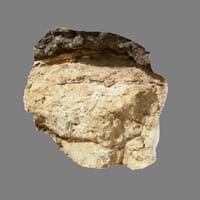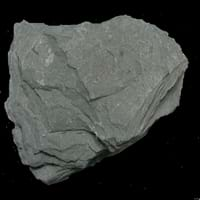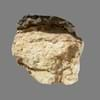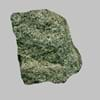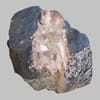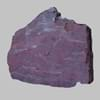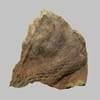Definition
Laterite rock is a type of Sedimentary rock which is rich in iron and aluminium, formed in hot and wet tropical areas
Slate is a fine-grained, foliated, homogeneous metamorphic rock derived from an original shale-type sedimentary rock composed of clay or volcanic ash through low-grade regional metamorphism
Discoverer
Francis Buchanan-Hamilton
Unknown
Etymology
From Latin later brick, tile + -ite1
From Old French esclate, from esclat (French éclat)
Class
Sedimentary Rocks
Metamorphic Rocks
Sub-Class
Durable Rock, Soft Rock
Durable Rock, Medium Hardness Rock
Group
Not Applicable
Not Applicable
Other Categories
Fine Grained Rock, Opaque Rock
Fine Grained Rock, Opaque Rock
Texture
Earthy, Massive, Porphyritic
Foliated
Color
Brown, Buff, Red
Black, Brown, Buff, Green, Light to Dark Grey, Purple, Red, Shades of Blue
Durability
Durable
Durable
Appearance
Rough and Banded
Dull
Interior Uses
Decorative Aggregates, Flooring, Interior Decoration
Bathrooms, Decorative Aggregates, Entryways, Floor Tiles, Flooring, Homes, Hotels, Interior Decoration, Kitchens, Stair Treads
Exterior Uses
As Building Stone, As Facing Stone, Garden Decoration
As Building Stone, As Facing Stone, Garden Decoration, Paving Stone
Other Architectural Uses
Curbing
Curbing
Construction Industry
Cobblestones, for Road Aggregate, Landscaping, Roadstone
As Dimension Stone
Medical Industry
Not Yet Used
Not Yet Used
Antiquity Uses
Artifacts, Monuments, Sculpture
Artifacts, Monuments, Sculpture, Small Figurines
Commercial Uses
An Oil and Gas Reservoir, Source of bauxite, Used in aquariums
Blackboards, Commemorative Tablets, Laboratory bench tops, Standard material for the bed of Billiard table, Standard material for the beds of Pool and Snooker table, Tombstones, Used in aquariums, Writing Slates
Types
Not Available
Not Available
Features
Is one of the oldest rock, Very fine grained rock
Easily splits into thin plates, Surfaces are often shiny, Very fine grained rock
Archaeological Significance
Famous Monuments
Data Not Available
Data Not Available
Famous Sculptures
Data Not Available
Data Not Available
Formation
Laterite is a type of sedimentary rock which is generally a reddish weathering product of basalt.
Slate is a low grade metamorphic rock that is generally formed by metamorphosis of mudstone or shale, under relatively low pressure and temperature conditions.
Mineral Content
Aluminum Oxides, Biotite, Hematite, Hornblade, Iron Oxides, Manganese Oxides, Micas, Muscovite or Illite, Plagioclase, Pyroxene
Apatite, Biotite, Chlorite, Feldspar, Graphite, Hematite, Kaolinite, Magnetite, Pyrite, Tourmaline, Zircon
Compound Content
Aluminium Oxide, CaO, Iron(III) Oxide, FeO, Potassium Oxide, MgO, MnO, Sodium Oxide, Phosphorus Pentoxide, Silicon Dioxide, Titanium Dioxide
Aluminium Oxide, CaO, Iron(III) Oxide, Potassium Oxide, MgO, Sodium Oxide, Silicon Dioxide, Titanium Dioxide
Types of Metamorphism
Not Applicable
Burial Metamorphism, Cataclastic Metamorphism, Regional Metamorphism
Types of Weathering
Biological Weathering, Chemical Weathering
Biological Weathering, Chemical Weathering, Mechanical Weathering
Types of Erosion
Chemical Erosion, Water Erosion, Wind Erosion
Coastal Erosion, Glacier Erosion, Water Erosion, Wind Erosion
Grain Size
Fine Grained
Very fine-grained
Fracture
Conchoidal
Splintery
Streak
White
Light to dark brown
Porosity
Highly Porous
Less Porous
Compressive Strength
Not Available
Cleavage
Not Applicable
Slaty
Toughness
Not Available
1.2
Specific Gravity
Not Available
2.65-2.8
Transparency
Opaque
Opaque
Density
Not Available
2.6-2.8 g/cm3
Specific Heat Capacity
Not Available
Resistance
Heat Resistant, Pressure Resistant
Heat Resistant, Impact Resistant, Pressure Resistant, Wear Resistant
Deposits in Eastern Continents
Asia
India
China, India, Turkey
Africa
East Africa, Western Africa
Not Yet Found
Europe
England, Romania, Scotland
Belgium, France, Germany, Italy, Norway, Portugal, Spain, United Kingdom
Others
Not Yet Found
Arctic
Deposits in Western Continents
North America
Canada, USA
USA
South America
Not Yet Found
Brazil
Deposits in Oceania Continent
Australia
Central Australia, Western Australia
Not Yet Found
All about Laterite and Slate Properties
Know all about Laterite and Slate properties here. All properties of rocks are important as they define the type of rock and its application. Laterite belongs to Sedimentary Rocks while Slate belongs to Metamorphic Rocks.Texture of Laterite is Earthy, Massive, Porphyritic whereas that of Slate is Foliated. Laterite appears Rough and Banded and Slate appears Dull. The luster of Laterite and Slate is dull. Laterite is available in brown, buff, red colors whereas Slate is available in black, brown, buff, green, light to dark grey, purple, red, shades of blue colors. The commercial uses of Laterite are an oil and gas reservoir, source of bauxite, used in aquariums and that of Slate are blackboards, commemorative tablets, laboratory bench tops, standard material for the bed of billiard table, standard material for the beds of pool and snooker table, tombstones, used in aquariums, writing slates.
